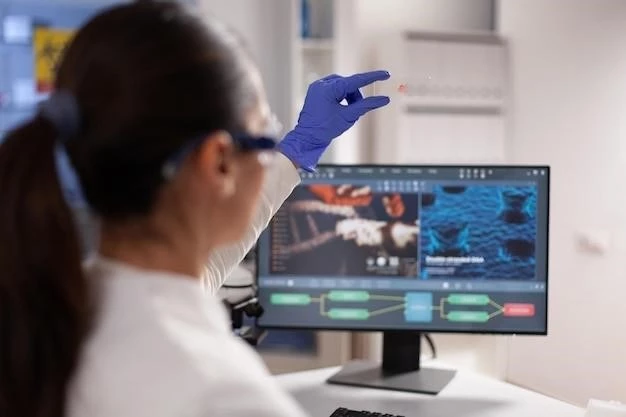Introduction
Multicentric Reticulohistiocytosis (MR) is a rare systemic disorder characterized by cutaneous papulonodular lesions and severe destructive arthritis․ It presents with distinct skin abnormalities and erosive polyarthritis․
Overview of Multicentric Reticulohistiocytosis
Background⁚ Multicentric reticulohistiocytosis (MR) is a rare systemic disorder characterized by cutaneous papulonodular lesions and severe destructive arthritis․ It is a systemic monocytoid/histiocytic disorder with multinucleated giant cells, polyarthritis, and papulonodular skin lesions․ The disease is not confined to a specific part of the body and can present with atypical histologic findings in the skin and lymph nodes․ There are important immunohistochemical findings that help in the diagnosis of multicentric reticulohistiocytosis․ Recent studies have shed light on the pathogenesis and treatment options for this rare condition, highlighting the need for further research to improve outcomes for patients․
Clinical Features
Experience skin abnormalities like papules and nodules along with severe erosive polyarthritis are common in multicentric reticulohistiocytosis․
Skin Lesions in Multicentric Reticulohistiocytosis
Multicentric reticulohistiocytosis (MR) typically presents with distinct papules and nodules on the skin surface․ These papulonodular lesions are often associated with severe and rapidly progressive erosive polyarthritis, forming a crucial part of the clinical diagnosis of the disease․ The skin lesions in MR are a key feature that aids in distinguishing this rare condition from other rheumatic diseases․ Understanding the characteristics of these skin manifestations is essential for accurate diagnosis and appropriate management of multicentric reticulohistiocytosis․
Diagnosis
Accurate diagnosis of multicentric reticulohistiocytosis involves detailed assessment of clinical features, skin lesions, and immunohistochemical findings to differentiate it from other rheumatic diseases․
Immunohistochemical Findings in Multicentric Reticulohistiocytosis
Immunohistochemical analysis plays a crucial role in diagnosing multicentric reticulohistiocytosis․ Findings often reveal polyclonal plasmacytosis, follicular hyperplasia, and unique marker expressions like CD68 and MAC387 in the infiltrates٫ aiding in distinguishing MR from other histiocytic disorders․
Treatment
The management of multicentric reticulohistiocytosis typically involves a multidisciplinary approach with a focus on reducing inflammation, controlling symptoms, and preserving joint function․ Treatment options may include corticosteroids, immunosuppressive agents, disease-modifying anti-rheumatic drugs, and in some cases, biologic therapies․
Management of Multicentric Reticulohistiocytosis
The management of multicentric reticulohistiocytosis involves a comprehensive approach focusing on reducing inflammation, relieving symptoms, and preserving joint function․ Therapeutic strategies often include corticosteroids, immunosuppressive agents, disease-modifying anti-rheumatic drugs, and biologic therapies to address the systemic nature of the disease․ Close monitoring and collaboration between rheumatologists, dermatologists, and other healthcare providers are crucial for optimizing outcomes in patients with multicentric reticulohistiocytosis․
Epidemiology
Prevalence and incidence data on multicentric reticulohistiocytosis are limited due to its rarity․ The disease primarily affects adults, with a higher prevalence in females․ Further research is needed to understand the epidemiology comprehensively․
Prevalence and Incidence of Multicentric Reticulohistiocytosis
Given the rarity of multicentric reticulohistiocytosis, there is limited data on its prevalence and incidence rates․ The disease primarily affects adults and shows a higher occurrence in females․ Further epidemiological studies are required to provide a more comprehensive understanding of multicentric reticulohistiocytosis in the population․

Prognosis
The prognosis for patients with multicentric reticulohistiocytosis can vary, with some experiencing significant joint damage and functional impairment․ Early diagnosis and appropriate treatment can improve outcomes and quality of life for individuals with this rare condition․
Outcomes for Patients with Multicentric Reticulohistiocytosis
The prognosis for individuals with multicentric reticulohistiocytosis can vary, with some experiencing significant joint damage and functional impairment․ Early diagnosis and appropriate management can improve outcomes and quality of life for these patients․

Research and Advances
Recent studies have focused on the pathogenesis and treatment options for multicentric reticulohistiocytosis․ Understanding immunohistochemical findings and exploring innovative therapies are key areas of advancement in managing this rare condition․
Recent Studies on Multicentric Reticulohistiocytosis
Recent research has focused on the histologic analysis of cutaneous lesions and the immunohistochemical findings in multicentric reticulohistiocytosis․ Studies have also explored the association of this rare systemic disease with other conditions like malignancy․
